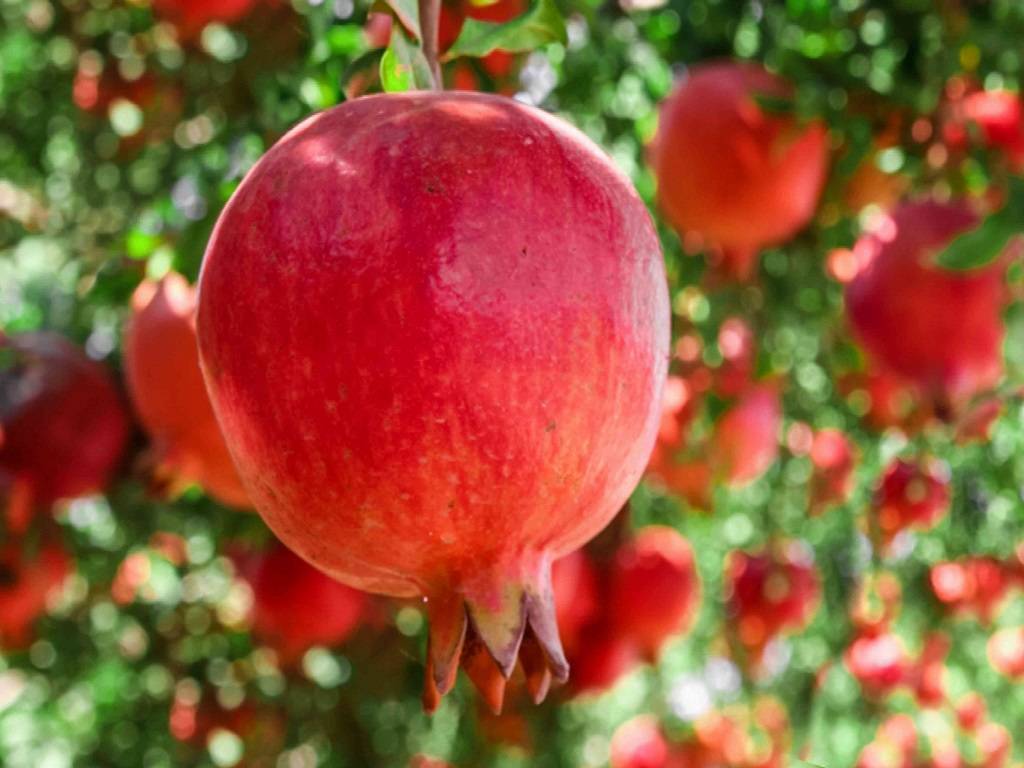
Most of the crops are affected during the summer season. With the rising temperatures, crops need more irrigation as a result, farmers face higher farming costs. Pomegranate cultivation on the other hand, reaps plenty of benefits during the summer season. It can be grown effectively in hot weather since it does not require much watering.
Pomegranate cultivation in India is mainly done in Maharashtra. Its gardens can be seen on small scale in Rajasthan, Uttar Pradesh, Andhra Pradesh, Haryana, Punjab, Karnataka, and Gujarat. Pomegranate is not only delicious but it is full of properties. Pomegranate is considered to be the most healthy and nutritious fruit. This fruit is rich in fiber, vitamins C and K. Although almost all fruit juices are beneficial, pomegranate juice especially helps in weight loss, you should include pomegranate in your diet plan.
Things to keep in mind in Pomegranate Cultivation
Climate
Pomegranate is a plant of sub-tropical climate; it can grow well in a semi-arid climate. A hot and dry climate is required at the time of fruit development and ripening. A temperature of 38 degrees Celsius is required for the development of pomegranate fruit.
What kind of soil is required for pomegranate cultivation?
Well-drained sandy loam soil is considered to be the best for the cultivation of pomegranate. Fruit quality and color are better in light soils than in heavy soils.
Pomegranate Varieties
Super saffron: The fruits of this variety are smooth, shiny, and large in size of saffron. Its seeds are soft. If managed well, about 40 - 50 kg yield can be obtained from each plant. This variety is considered very suitable in Rajasthan and Maharashtra.
Jyothi: The fruits of this variety are of medium to large size with smooth surface and yellowish red color. Aryls are pink in between. It tastes very sweet to eat.
Mridula: Fruits of this variety are medium-sized to dark red color with a smooth surface. The dark red-colored seeds are soft, juicy, and sweet. The average weight of fruits of this variety is 250-300 grams.
Arakta: It is a high-yielding variety. Its fruits are large, with sweet, soft seeds. The aril is red and the skin is an attractive red color. If cultivated properly, 25 to 30 kg yield can be obtained from each plant.
Kandhari: The fruit is larger and more succulent, but the seeds are a bit hard.
The right time to plant pomegranate plant
The suitable time for planting pomegranate plants is from August or February to March.
Do this work before planting
One month before planting, dig a pit of 60 X 60 X 60 cm (length, width, and depth) and leave it open for 15 days. After that, mix 20 kg rotten cow dung manure, 1 kg single super phosphate, and 50 g chlorpyrifos powder in the soil and fill the pits to a height of 15 cm from the surface. Irrigate after filling the pit so that the soil freezes well, after that plant the plants and irrigate immediately after planting.
How to irrigate?
The pomegranate crop is a drought-tolerant crop. For taking Mrig Bahar crop, irrigation should be started from May and regular till the arrival of the monsoon. After the rainy season, regular irrigation should be done at an interval of 10 to 12 days for the good development of fruits. Drop-by-drop irrigation has proved useful for pomegranate, it has seen 43% water savings and a 30-35% increase in yield.
Pomegranate plants need very little pruning and cut their twigs only so that their bushes do not form. In addition, suckers growing around the stem should be removed as they compete with the main plant and reduce its effectiveness.
When should irrigation be stopped?
Pomegranate flowers thrice a year, from June-July (Mrig Bahar), September-October (Hat Bahar), and January-February (Ambe Bahar). Commercially only one crop is taken and it is determined according to the availability of water and market demand. In the areas where there is no irrigation facility, fruits are taken from Mrig Bahar, and in areas where irrigation facilities are available, fruits are taken from Ambe Bahar. Irrigation should be stopped two months before the flowering of the spring from which fruits are to be taken for spring control.
Pomegranate cultivation benefits
Plants like this start fruiting after 3 years of planting. But commercial production should bear fruit only after 5 years of planting. The well-developed plant gives 60 to 80 fruits every year for 25 to 30 years. Planting pomegranate orchards can yield about 480 tonnes, which can give an annual income of eight to ten lakh rupees from one hectare. By adopting the new method, the cost of manure and fertilizers increases by only 15 to 20 percent, while increasing the yield by 50 percent and avoiding other losses.










